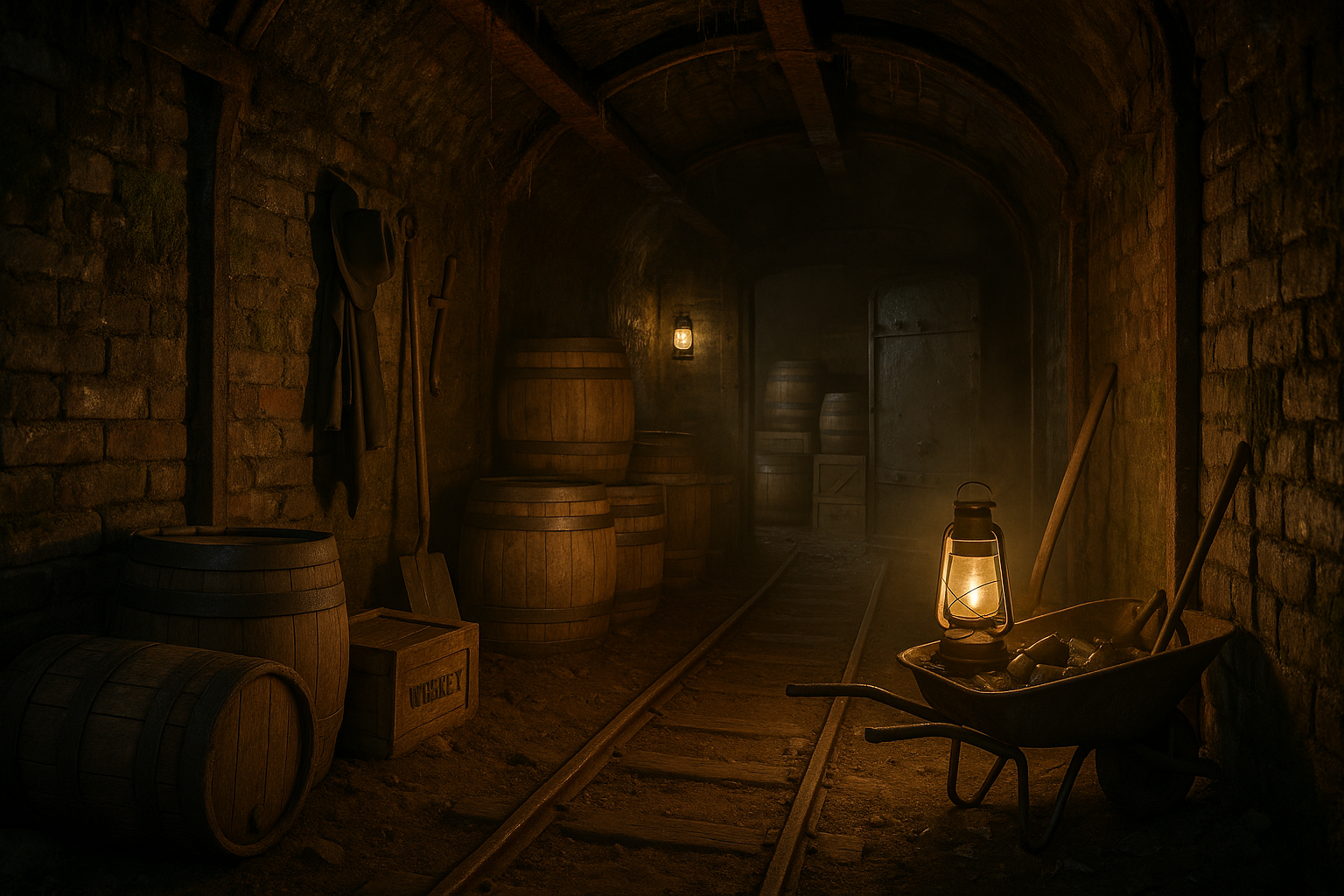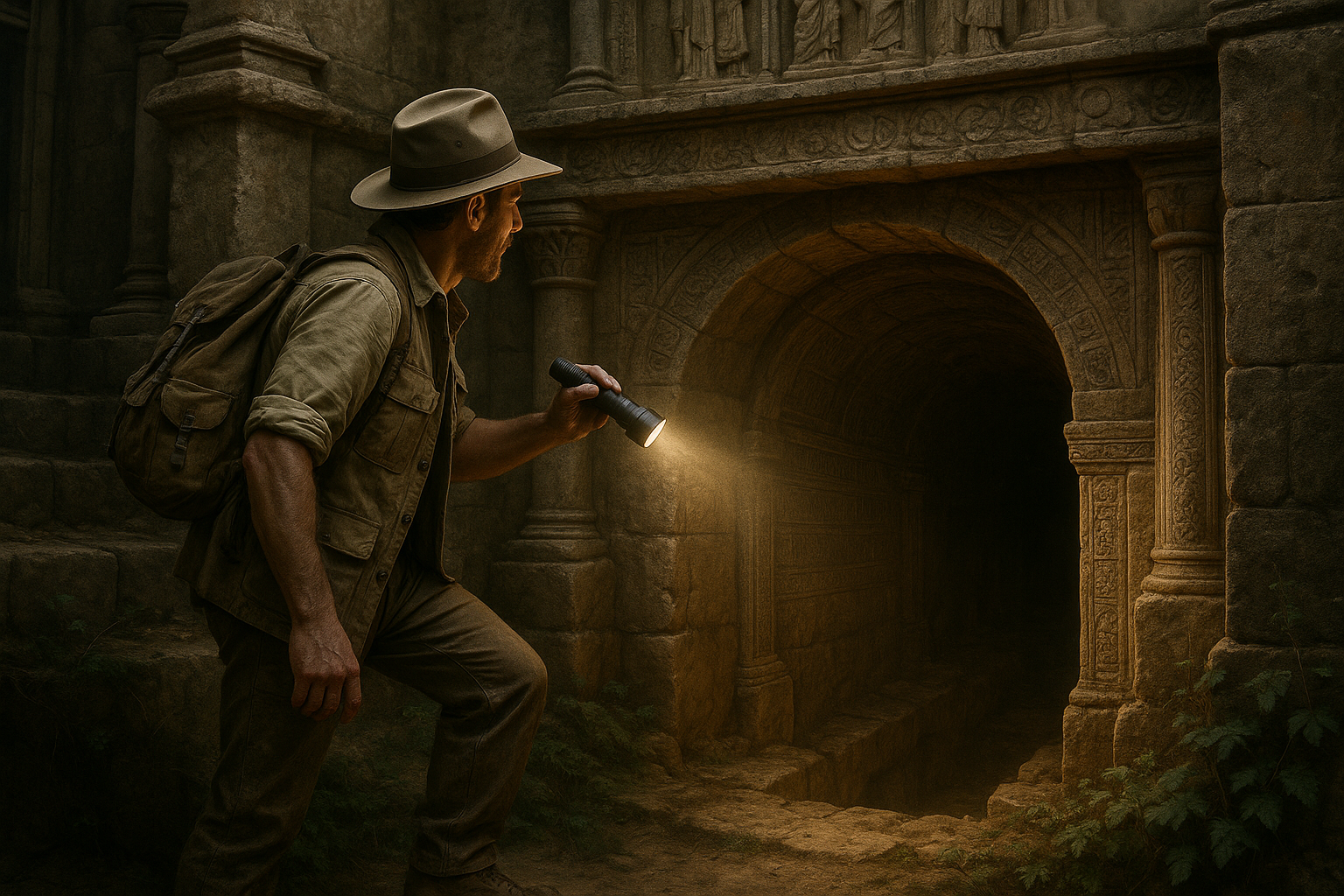In the hushed silence of the underground, where the only sound is often the echo of footsteps against damp stone, there exists an unseen force that is both a guardian and a threat: the air we breathe. From the ancient catacombs of Rome to the bustling subways of New York City, subterranean spaces have long held a fascination for humanity. They serve as places of refuge, transit, and discovery. However, beneath the allure of these hidden realms lies a critical necessity that often goes unnoticed—adequate ventilation. Ensuring the safety and breathability of air in these enclosed environments is not just an engineering challenge; it is a vital aspect of public health and safety that demands our attention and innovation. 🌍
The importance of ventilation in subterranean spaces cannot be overstated. These environments pose unique challenges due to their confined nature and the potential for hazardous accumulations of gases such as carbon monoxide and radon. Whether it’s a subway system, a mining operation, or a tourist cave, the absence of proper airflow can lead to dire consequences, affecting both the people who work in these environments and those who simply pass through. As urban areas continue to expand and space becomes an ever-scarcer commodity, the use of underground spaces is only set to increase, making the issue of ventilation more pertinent than ever.
In this article, we will explore the multifaceted world of subterranean ventilation, shedding light on the engineering feats and technological advancements that make safe underground habitation possible. We’ll delve into the history of underground ventilation, tracing its evolution from rudimentary systems to the sophisticated technologies of today. Our journey will take us through the labyrinthine tunnels of mega cities, into the depths of mining operations, and even beneath the surface of tourist destinations that boast breathtaking subterranean landscapes. We will also examine the environmental impact of these systems, considering how sustainable practices can be implemented to minimize our ecological footprint while maximizing safety and efficiency.
Furthermore, we will discuss the future of subterranean ventilation, focusing on innovative solutions and emerging technologies that promise to revolutionize the way we think about underground air quality. From cutting-edge sensors that monitor air composition in real-time to advanced filtration systems that ensure a continuous supply of fresh air, the advancements in this field are as dynamic as they are crucial. Join us as we embark on this exploration of underground environments, uncovering the invisible yet indispensable world of ventilation that lies beneath our feet. Through this journey, we aim to not only inform but also inspire a deeper appreciation for the air we often take for granted, highlighting the ingenuity and dedication required to make subterranean spaces safe for everyone. 🌿
The Importance of Ventilation in Subterranean Spaces
Subterranean spaces, such as basements, tunnels, and underground facilities, present unique challenges when it comes to maintaining air quality and ensuring the safety of those who work or live in these environments. These areas often suffer from poor natural ventilation due to their enclosed nature, which can lead to a buildup of pollutants, moisture, and potentially harmful gases. This makes the implementation of effective ventilation systems crucial for the health and safety of occupants. Understanding the importance of ventilation in these settings can help prevent health issues and improve overall air quality.
One major concern in subterranean spaces is the accumulation of radon, a naturally occurring radioactive gas that can pose serious health risks over time. Radon is colorless, odorless, and tasteless, making it undetectable without proper testing equipment. In poorly ventilated underground areas, radon can accumulate to dangerous levels, increasing the risk of lung cancer for those exposed. This highlights the need for continuous monitoring and the use of ventilation systems designed to mitigate radon concentrations.
Another challenge in underground spaces is controlling moisture and preventing mold growth. High humidity levels can lead to mold, which can cause respiratory issues and exacerbate conditions like asthma and allergies. Effective ventilation systems help control humidity by circulating air and reducing moisture levels. By keeping the air dry and fresh, these systems not only improve comfort but also prevent structural damage caused by mold and mildew. 🏠
Key Factors in Designing Ventilation Systems
Designing a ventilation system for subterranean spaces requires a comprehensive understanding of various factors, including the size and layout of the space, the number of occupants, and the types of activities being conducted. A well-designed system should ensure a steady supply of fresh air while efficiently removing stale air and pollutants. Engineers must consider the specific needs of each space to develop solutions that are both effective and energy-efficient.
One of the primary factors to consider is the air change rate, which refers to the number of times the air within a space is replaced over a specific period. In underground environments, higher air change rates may be necessary to compensate for the lack of natural airflow. It’s crucial to balance the air change rate with energy consumption to ensure the system is cost-effective and sustainable.
Additionally, the choice of ventilation equipment plays a vital role in the system’s performance. Various options are available, including fans, ducts, and air handling units, each with its advantages and limitations. For instance, fans can be used to direct airflow strategically, while air handling units can filter and condition the air before it’s distributed throughout the space. Engineers must carefully evaluate these options to determine the most suitable equipment for each application. 🔍
Comparing Ventilation Solutions
When it comes to ventilation solutions for subterranean spaces, several approaches can be considered. Each solution offers distinct benefits and is suitable for different scenarios. By comparing these options, facility managers can make informed decisions that align with their specific needs and constraints.
| Solution | Advantages | Disadvantages |
|---|---|---|
| Natural Ventilation | Low cost, energy-efficient | Limited airflow, weather-dependent |
| Mechanical Ventilation | Controlled airflow, effective pollutant removal | Higher cost, requires maintenance |
| Hybrid Ventilation | Combines benefits of natural and mechanical systems | Complex design, higher initial investment |
Natural ventilation relies on passive airflow through openings like windows and vents. It’s a cost-effective solution but may not provide sufficient ventilation in underground spaces due to their confined nature. Mechanical ventilation, on the other hand, uses equipment such as fans and ductwork to actively circulate air. While this method is more effective at ensuring consistent airflow, it comes with higher costs and requires regular maintenance.
Hybrid ventilation systems integrate natural and mechanical methods, offering a balance between cost and efficiency. These systems can automatically switch between modes based on environmental conditions, optimizing energy use while maintaining air quality. Facility managers should assess the specific conditions of their spaces to determine which solution is most appropriate. 🔄
Implementing Ventilation Systems
Implementing a ventilation system in subterranean spaces involves careful planning and execution. The process typically begins with a thorough assessment of the environment to identify potential hazards and airflow patterns. Engineers then design a system tailored to the space’s unique characteristics, ensuring that it meets regulatory requirements and industry standards.
During installation, attention to detail is crucial to avoid issues such as air leaks or uneven airflow distribution. Once the system is operational, regular maintenance and monitoring are essential to ensure continued performance and address any emerging issues. Facility managers should establish maintenance schedules and conduct periodic inspections to keep the system running smoothly.
To further enhance understanding, watch the video below from the Engineering Mindset channel on YouTube, which provides an in-depth look at ventilation principles and system design: Ventilation System Basics. 🎥
The Role of Technology in Ventilation
Advancements in technology have significantly impacted the design and operation of ventilation systems. Modern systems often incorporate smart technology, allowing for automated control and real-time monitoring. This not only enhances efficiency but also improves safety by enabling quick responses to changes in air quality or environmental conditions.
Smart ventilation systems use sensors to collect data on various parameters such as temperature, humidity, and pollutant levels. This information is then analyzed to optimize system performance and adjust settings dynamically. For instance, if sensors detect an increase in CO2 levels, the system can automatically increase airflow to maintain safe conditions.
Moreover, remote monitoring capabilities allow facility managers to oversee multiple sites from a centralized location. This is particularly beneficial for large organizations with numerous subterranean spaces, as it streamlines management and reduces the need for on-site personnel. By leveraging technology, organizations can enhance the effectiveness of their ventilation systems and ensure a safer environment for occupants. 📈
Future Trends in Ventilation
The future of ventilation in subterranean spaces looks promising, with several trends poised to reshape the industry. One such trend is the increasing focus on sustainability and energy efficiency. As concerns about climate change and resource conservation grow, there is a push for systems that minimize energy consumption while maintaining high air quality standards.
Innovative materials and design techniques are being explored to enhance the efficiency of ventilation systems. For example, the use of energy-efficient fans and advanced filtration technologies can significantly reduce energy usage. Additionally, designs that incorporate natural cooling and heating methods, such as geothermal systems, are gaining popularity.
Another trend is the integration of artificial intelligence (AI) in system design and operation. AI can analyze large datasets to predict maintenance needs, optimize airflow, and even suggest design improvements. This predictive capability helps prevent system failures and ensures that ventilation systems operate at peak efficiency.
- Increased focus on sustainability and energy efficiency.
- Use of innovative materials and advanced filtration technologies.
- Integration of AI for predictive maintenance and optimization.
These trends indicate a future where ventilation systems are more adaptable, efficient, and capable of meeting the evolving needs of subterranean spaces. By staying informed about these developments, facility managers can make proactive decisions that enhance safety and air quality in their environments. 🌱

Conclusion
Ensuring safety and proper ventilation in subterranean spaces is not just a technical challenge, but a critical concern that impacts health, productivity, and even survival in various industries. In this article, we’ve explored the essential components of maintaining breathable and safe environments below ground, focusing on technological advancements, best practices, and the human elements involved in subterranean operations.
To begin, we delved into the significance of proper ventilation in underground environments, emphasizing its role in mitigating risks associated with poor air quality, such as the accumulation of toxic gases, and ensuring a continuous supply of oxygen. The importance of monitoring and managing air composition cannot be overstated, as it directly affects both safety and operational efficiency. Advanced technologies like real-time monitoring systems and automated ventilation controls have revolutionized how we approach these challenges, providing more precise and reliable solutions.
Furthermore, we’ve highlighted the necessity of a comprehensive safety protocol that includes regular equipment maintenance, thorough training programs for workers, and clear emergency response procedures. These elements are fundamental to preventing accidents and ensuring that workers are prepared to handle any situation that may arise. The implementation of safety measures is not a one-time effort but a continuous commitment to upholding the highest standards in subterranean operations.
Another critical aspect discussed is the integration of smart technologies and data analytics to enhance safety and efficiency. By leveraging data collected from sensors and monitoring devices, operators can make informed decisions, anticipate potential issues, and optimize ventilation systems for better performance. The role of innovation in transforming underground workspaces into safer, more productive environments cannot be underestimated.
We also explored the human factor, acknowledging that technology alone is not sufficient. The attitudes and behaviors of workers, the quality of leadership, and the overall safety culture within an organization play pivotal roles in achieving a safe and well-ventilated environment. Encouraging open communication, fostering a culture of safety, and empowering workers to take an active role in their own safety are essential steps toward creating a sustainable and secure workplace.
The implications of our discussion extend beyond the immediate confines of subterranean spaces. As urbanization and population growth drive the need for more underground infrastructure, the principles of safety and ventilation become increasingly relevant in the context of urban planning and development. Engineers, policymakers, and stakeholders must work collaboratively to ensure that future projects prioritize health and safety without compromising on innovation and functionality.
In conclusion, the journey to “Breath Easy” in subterranean spaces requires a holistic approach that combines cutting-edge technology, robust safety protocols, and a strong emphasis on human factors. The insights and strategies outlined in this article are designed to inspire and guide those involved in subterranean operations to continuously strive for improvements. By sharing knowledge and experiences, we can collectively enhance safety and efficiency in these challenging environments.
We invite you to reflect on the ideas presented and consider how they might apply to your own work or community. Whether you’re involved in mining, construction, or urban planning, the principles discussed here are universally applicable. Share this article with colleagues and peers who might benefit from these insights. Engage in discussions, offer your own perspectives, and together, let’s champion the cause of safety and innovation in subterranean spaces. 🌍💡
For further reading and resources, we recommend exploring NIOSH Mining Safety and Health Research and The International Tunnelling and Underground Space Association. These platforms provide a wealth of information and tools that can assist in furthering your understanding and implementation of effective safety measures in underground environments.
Thank you for joining us on this exploration of safety and ventilation in subterranean spaces. Your commitment to learning and applying these principles makes a significant difference in creating safer, more efficient work environments for everyone. 🌟
Toni Santos is a visual storyteller and artisan whose work explores the quiet power of what lies beneath. With a deep fascination for subterranean and hidden architecture, Toni uncovers the layers, voids, and forgotten spaces that shape our built environment from the shadows.
His art is a journey through the unseen — from ancient underground chambers to sealed passageways, service tunnels, and foundations buried in time. Each creation tells a story of silence, secrecy, and structure — revealing how absence and concealment can be just as meaningful as what’s visible above ground.
Whether working through visual compositions, architectural studies, or symbolic handcrafted pieces, Toni captures the soul of hidden spaces. His work bridges art and archaeology, blending design with discovery. Trained in visual design and traditional techniques, Toni creates with intention. His pieces don’t just depict — they interpret, inviting viewers to rethink what space, memory, and architecture mean when they’re hidden from view.
As the creative force behind Vizevex, Toni shares this perspective through curated visual narratives, symbolic collections, and interpretive essays that give voice to the quiet geometries beneath our feet.
His work is a tribute to:
The mystery of spaces built to be forgotten
The symbolism embedded in foundations, voids, and passageways
The timeless connection between human intention and hidden structure
Whether you’re an artist, an urban explorer, or someone fascinated by the unseen frameworks that support our world, Toni invites you into a realm where architecture becomes myth — one corridor, one layer, one buried story at a time.





